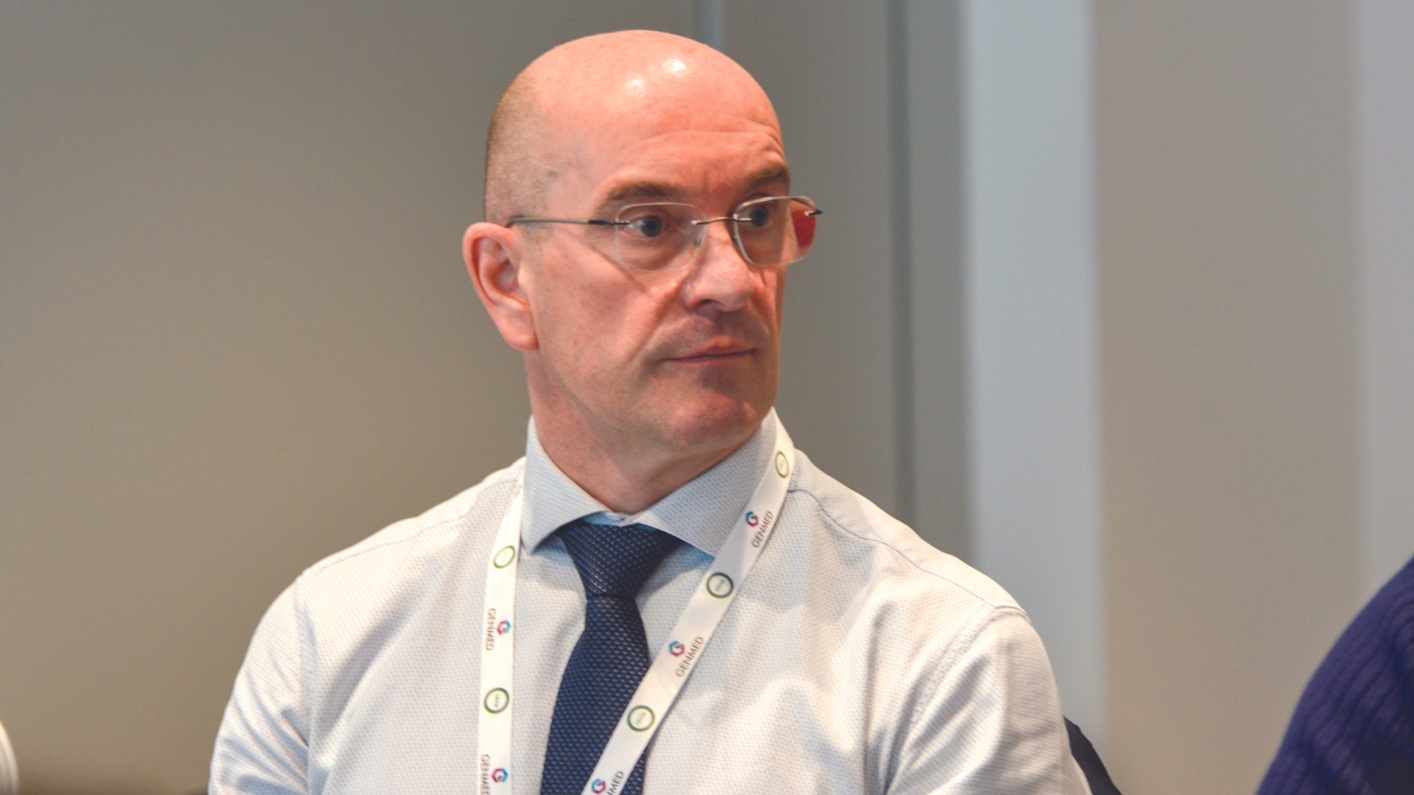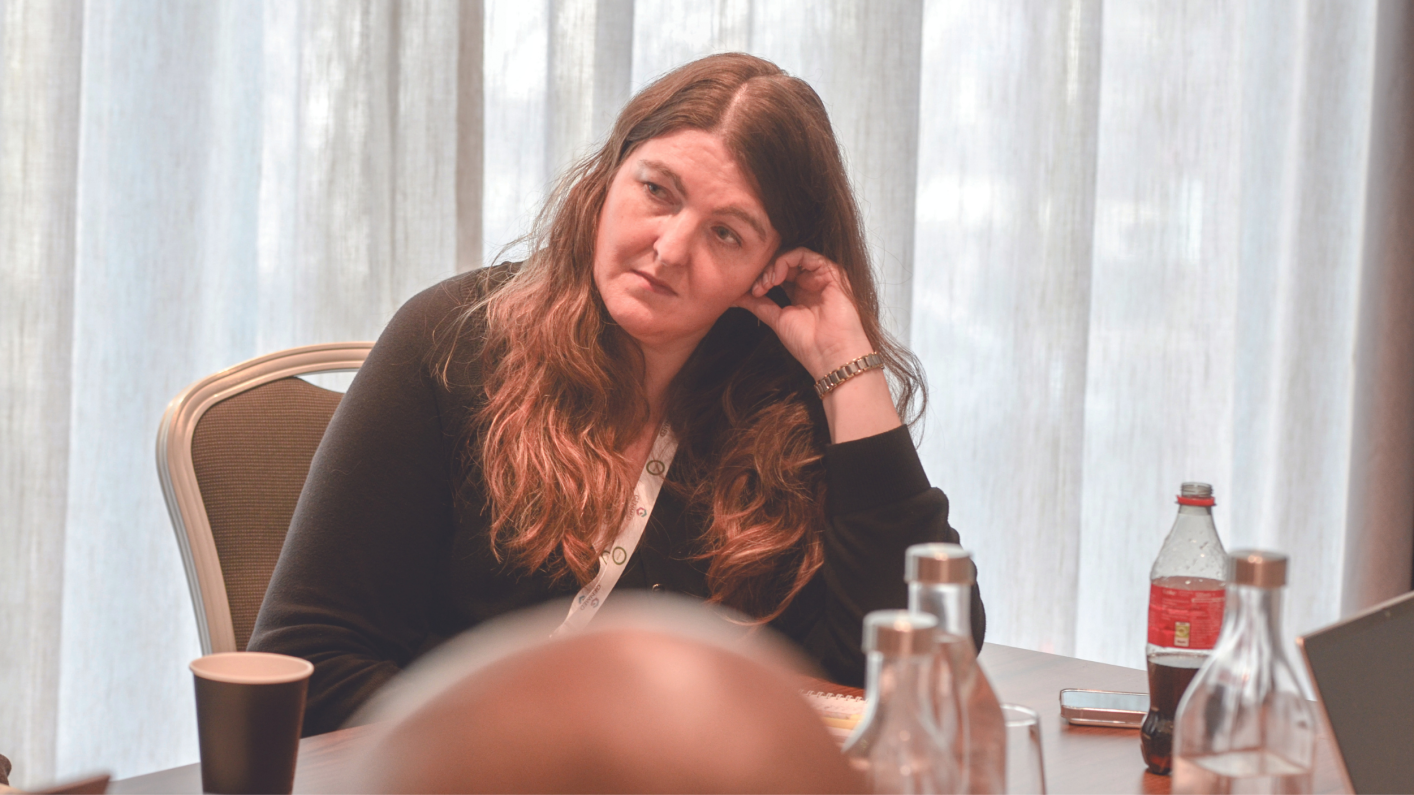Feature / Roundtable: adding value to procurement
The NHS spends more than £30bn a year on goods and services, with in excess of £10bn spent on consumables. Given the significant financial challenges facing the NHS, getting the best possible value out of this spend can help to maximise the resources available to support frontline care. With electronic product identification improving and a range of tools available for analysis and benchmarking, the data is now available to analyse spend and look for savings opportunities.

However, there remain issues with the quality of the data on which this analysis can be undertaken and its consistency across different systems. Are systems addressing these data quality issues and in a position to take full advantage of the data at their fingertips?
This was the topic under discussion at a recent HFMA roundtable, supported by AdviseInc, where the question of how finance and procurement teams can promote a data-led approach to procurement savings was posed.
Ben Roberts, associate director of finance, West Yorkshire Association of Acute Trusts, chaired the roundtable and started by asking: ‘Do we know where the opportunities to add value in procurement decisions are and, if not, do we know where to go to find them?’
Delegates did not dispute that the opportunities exist, but in an environment where senior finance and procurement leaders and their staff are juggling multiple competing demands, they were concerned that there is not always sufficient time to think about how to harness them and then to implement the necessary changes.
‘I think we do know where the opportunities are often, but it is just the capacity, time and headspace to look at what is possible,’ commented Alston Owens, assistant director of finance for Torbay and South Devon NHS Foundation Trust.
Being able to act quickly is another issue, he said. ‘I hear day-in, day-out ideas about what we could do, but by the time we get round to it, the opportunity has passed.’
Having data available that identifies quick wins may help to resolve this.
Others agreed that opportunities were often missed because of simple capacity constraints. And it can be difficult to know where to focus what limited capacity is available. Teams can be so busy with big projects that they simply do not have time to realise relatively accessible savings, even where there is really good evidence.

Patrick Butterworth (pictured), chief financial officer at NHS Supply Chain, said finance leaders had to make decisions every day on how to best spend their time. This could result in them having to turn down an opportunity for a £300,000 saving that might only take a few hours to secure, because they are focused on delivering a £3m benefit or cost mitigation elsewhere.
‘The reality is that they do not have the time or capacity to do everything, which means some opportunities are not able to be pursued,’ said Mr Butterworth. ‘That is why it is important for the whole system to work together and with organisations such as NHS Supply Chain to provide the support to deliver best value.’
The roundtable argued that there should be ways to do the large-scale programmes, while still realising the smaller savings, suggesting that the solution was about first freeing up finance and procurement professionals’ time.
‘We spend so much of our time with nitty gritty stuff,’ said Charlene Sables, deputy director of finance at Royal Berkshire NHS Foundation Trust. ‘But if we had the right systems talking to each other, if we had the right data to use efficiently, we would free up our own time and the time of our teams to go for both the £3m as well as the £300,000 savings.’
Timing and scale
The NHS focus on a single financial year, with financial balance needing to be delivered each and every year and restrictions on carrying forward funding, also adds to the challenges.
This is a problem for many parts of NHS finance, with capital and digital funding being classic examples. In terms of procurement, the preoccupation with in-year delivery leads to organisations focusing on what can be done in the short term rather than making changes that would support longer term sustainability. ‘But if we’re firefighting today, we’re not planning for tomorrow,’ said Mr Butterworth.
Part of the solution to considering both short- and long-term impacts is about how
the roles within the procurement function are distributed. There will always be a requirement for buyers who have local knowledge and work closely with clinical and non-clinical teams to achieve value for money on individual purchases.
But the bigger ticket/multi-year opportunities may need a different approach, bringing in system-wide or national approaches that can access economies of scale.
Economies of scale can work at a national or a more local level. Some integrated care systems (ICSs), for example, are beginning to take advantage of system-wide collaboration.
However, this can bring its own challenges as purchasing decisions often need unanimous agreement to secure the best terms. If individual organisations do not participate, because they believe they can get, or are getting, a better deal on their own, then the system as a whole could lose out.

Instead, there needs to be a focus on benefits for the system as a whole. And there are other structural and governance barriers that can hinder effective collaboration.
Adrian Snarr (pictured), director of finance, estates and resources at South West Yorkshire Partnership NHS Foundation Trust, cited an example from when he was working in NHS England.
‘We were doing some work on finance systems and all organisations within a system moved to a single supplier and acknowledged at the beginning of that process that there would be winners and losers,’ he said. ‘The organisations already with that supplier had little to gain. Others had lots to gain. But they just did it as a system and helped the wider system get the benefits. It took some fairly brave decisions to do that.’
There are ways to get around the shared risk by allowing an opt-out clause for partners on individual projects. But this is likely to reduce buying power of any remaining partners and mean reduced system-wide benefit.
Participants discussed the fact that national data often suggested there were opportunities for efficiency around procurement. But they said that things that looked obvious from the centre weren’t always that clear cut. They argued that the key was communication. Data needed to be provided to trusts in a clear way so that these apparent opportunities were easily visible.
However, systems and providers also needed to feed back views on why these opportunities aren’t as accessible as they appear. It would also be helpful to identify both short- and longer-term opportunities for savings.

Levente Fazekas (pictured), head of commercial data insight in NHS England’s central commercial function, highlighted multiple different ways to look at procurement data. For example, the NHS Spend Comparison Service provides a national benchmarking tool based on purchase order, Supply Chain transaction and accounts payable data and can look at issues such as standardisation, supplier rationalisation, market prices and contract price variance based on spend.
There is also Atamis, the centrally procured single operational procurement system that trusts can use to develop and manage their own pipeline, savings, projects and contracts. He said the tools had already demonstrated their ability to identify and deliver efficiencies.
Service blindspot
Services are one area of procurement that doesn’t get as much attention as products. According to Mr Fazekas, the data is just not as readily available. ‘For example, in estates, do we have the benchmarking data in laundry to suggest how much we should pay for a particular volume of laundry? We just don’t have that data,’ he said. ‘All we have is horizontal benchmarking – you get three offers and look for the cheapest. So, I think it is services – estates and agencies – that are the big issue.’
Mr Snarr added that there were even some services where getting three bids for a tender was challenging, with primary care a particular difficulty and external audit another good example. ‘So you are not driving any competition,’ he said. ‘There is something about needing to stimulate the market.’

Mui Wan (pictured), associate director finance and performance improvement, NHS Arden and GEM Commissioning Support Unit, said that data was fundamental in finding opportunities for improvement. But it was not enough on its own. Collaboration at the individual level – between procurement or finance professionals and clinicians – was also vital.
‘Finance has got data, procurement has got data,’ she said. ‘But actually [the value comes] when you look at what’s behind the data. Which products are we buying? What are they being used for? And what’s the volume? The data alone won’t tell you.’
She suggested that organisations and systems needed an embedded culture that recognises the need to challenge how and why items are procured and shares best practice across the organisation and more widely. Implementing proven changes also made sense.
Mr Snarr agreed that data on its own only got you so far and that proper interpretation of the data was essential. He pointed out that, if you looked purely at the data, some of the biggest efficiency opportunities in his mental health trust were in estates and IT. However, the high costs in estates were driven by renting space from a local acute trust with a big private finance initiative scheme. ‘So I can save the money [for my trust] and move somewhere else, but it doesn’t save the system anything,’ he said.
The other apparent outlier in terms of expenditure is IT. Mr Snarr argued that the trust’s heavy investment in this area paid dividends elsewhere in the organisation. So, in these instances, the data wouldn’t necessarily signpost the real opportunities for savings.

Mr Owens (pictured) underlined this point. ‘I don’t think it is data we need – everyone gets loads of spreadsheets,’ he said. ‘It is the interpretation and analytics that are important – what does it tell me and can I run with it. What people need is to be able to see a matrix and quickly see what it means and play it into the conversation.’ This need for easy-to-understand numbers – or visually showing what the numbers mean, rather than the numbers themselves – could spell a different role for finance, he added.
Clinical role
Negotiating for a reduction in price paid is a key part of procurement. But understanding why a particular product is used at all may lead to greater efficiencies. A trust may have negotiated a good price for high-tech pacemakers, but if it is using a higher proportion of such devices than comparable trusts, with no clinical justification, the real saving could be in adjusting clinical practice.
This is something in which AdviseInc is increasingly involved, supporting systems to identify variation within their systems or nationally that would benefit from further exploration. AdviseInc works with more than 140 NHS trusts across the UK, supporting provider trusts, health boards and ICSs to make sense of their healthcare spend data. This has resulted in cost savings and reduced unwarranted variation in clinical settings and driven greater efficiency.

‘In one system, we looked at trauma products and in particular the use of locking and non-locking plates/screws,’ said Mat Oram (pictured), the company’s chief executive. He said there was clear variation in the use of the locking and non-locking options between different trauma teams in the same ICS. The different approaches incurred different costs, but it became clear that there was no clinical reason for the higher cost approach in the majority of instances.
While procurement professionals may not be in a position to tell a clinician what product to use, they can use the data to start a discussion among clinicians. In this case, clinician-to-clinician talks led to specific surgeons changing their usual practice. The data was the key, but the involvement of other clinicians was also important.

Ms Sables (pictured)suggested there was a tendency for procurement teams to not challenge clinicians. ‘How many times do we let clinicians dictate the business decision? Do we sometimes need to say “no” and tell them that this is the reason why?’ she asked. Ms Sables added that clinicians do not always think about the cost in specifying equipment or consumables. Clinicians clearly needed to take the lead role in patient care decisions, but this did not mean they shouldn’t be challenged on those decisions.
Trust was needed on both sides, the participants agreed. It may be that clinicians resist talking to procurement, because they assume that reducing cost is procurement’s key consideration. But procurement staff can also be reluctant to talk to medical staff, out of fear or wanting to avoid confrontation. Data again was highlighted as the ideal tool to get discussions started.
Hamish Makanji (pictured), head of hospital care at NHS Supply Chain, said there was an opportunity for greater clinical involvement and input, supporting strong decision-making, working alongside procurement teams. ‘One such example is clinical standardisation. How can clinicians be encouraged to take the lead on this, supported by procurement and finance, towards a shared goal, without unnecessary escalations?’ he asked. ‘Greater clinical leadership working alongside procurement and finance presents a further opportunity to unlock value.’
Several attendees at the roundtable noted parallels with wider work across the NHS to promote clinician-led decision making, specifically looking at tools such as GIRFT, the Model Health System and One NHS Finance’s EVO (Engagement Value Outcomes) programme. The key to these is that they can link quality and financial improvement by identifying and reducing unwarranted clinical variation and promoting quality-driven service improvement.
In particular, Ms Wan noted that EVO brings clinicians and finance together in a number of structured conversations with a clear project focus and could be easily extended to include procurement. ‘A lot of people are restricted in time,’ she said. ‘Creating a forum can help so that we can have that conversation.’
She suggested this would provide an opportunity to get all the evidence on the table and hear different views and preferences – for example, why antibacterial sutures could deliver value despite their upfront higher cost. ‘I wish I had more intelligence that could be brought into the conversation rather than being led by just one opinion,’ she said.
Moving to value-based procurement was also seen as an important change of direction in the NHS. The concept means a shift away from simply looking for reductions in product costs and instead considering technologies or product options that could lead to a reduction in the overall costs within a patient pathway.
Initial higher unit costs could be dwarfed by savings from reduced length of stay or reduced readmissions, for example. But it tied in with getting the balance right between decisions that would have a short- or longer-term impact.
Mr Makanji noted variation in interest across the country ‘There are ICSs that are not able to prioritise value-based procurement opportunities currently,’ he said, ‘while others are asking for every opportunity we can present. So, the challenge for the system is how do we get a consistent, positive, proactive approach to it?’
Mr Butterworth was also keen to emphasise that NHS Supply Chain focuses on delivering best value, rather than simply the lowest price. ‘Best value is a combination of price, quality and wider factors, such as country of origin, modern slavery and environmental sustainability,’ he said. He recognised there would be occasions when an organisation could find a product at a better price for a particular order cycle, but this would often not be a sustainable or consistent supply.
‘NHS Supply Chain seeks to maintain the sustainability and resilience of supply and this necessarily includes the broader recognition of sustainability of suppliers in any particular market,’ he said.
‘Over the medium term, a supply base is only sustainable if it is not loss-making, so it is important to recognise that it is okay for suppliers to make a profit within a competitive procurement framework delivering best value.’
Mr Butterworth added that NHS organisations had often not worked consistently or collaboratively on sourcing and tendering, and this could have a big impact on the efficiency of the supply market and supplier engagement. ‘It is important to understand that smaller suppliers may not have capacity to deal with multiple tenders at the same time and this can reduce their participation,’ he said.
His overarching point was the need for the NHS to manage the balance between lowest cost and sustainable best value for longer-term resilient delivery, adding that the new Strategic framework for NHS commercial should be a contributing enabler.
Data accuracy
With complete agreement on the importance of data to the whole procurement agenda, the roundtable recognised that data quality undermined the whole endeavour. Mr Snarr said: ‘Purchase orders are a really important part of how we capture the data’ – and an area to which more attention should be directed. Mr Oram agreed and emphasised the importance of purchase orders to both his company’s and the NHS’s benchmarking tools.
However, participants said some organisations were simply not getting the basics right.
Participants agreed that finance leaders should and can influence these basics. Mr Fazekas underlined that data submissions were vital to procurement data and many of the analysis tools.
Improvements could be made on completeness (not all organisations submit every week/month) and quality (organisations omit fields despite having the data). Poorly maintained product catalogues can lead to low visibility in spend. And source processes were often poor – for example, limited compliance on ‘no purchase order, no pay’ policies.
Mr Fazekas added that better data quality needed to be accompanied by better data literacy among finance and procurement professionals. ‘The ability to interpret and act on data insights is as crucial as the data itself, suggesting a need for investment in training and development to build these competencies across the NHS workforce,’ he said.
Conclusion

Mr Roberts (pictured) had started the roundtable by asking participants if they knew where the opportunities were and whether the data was available to help people find them. The conclusions appeared to be both yes and no.
In some cases, delegates heard, there is a bewildering amount of data, which is where existing benchmarking tools and national programmes can help. But there are also areas where the core data currently doesn’t exist, particularly to support decisions around service contracts.
Data is also often only a starting point for further exploration, but can be the key to engaging with clinicians. Finance and procurement professionals have made strides with this in recent years.
But in a busy environment for everyone, perhaps particularly for clinicians, this will require continued effort. Getting frontline staff engaged in procurement, and to understand how better procurement can have an impact on patient care, will be as important as the data.
Mr Roberts added that the NHS had to increasingly focus on value rather than cost.
This meant looking at the value delivered over time, not just in year, and it meant understanding the ethical and environmental performance of suppliers. Buying at the right level – through local, regional or national mechanisms – was also important, with systems and providers needing to understand what worked best at each level.
And there was still work to do to improve – or keep improving – data quality. Data remains essential to improving procurement, but if the data is incomplete or poor quality, it could mean major decisions are built on poor foundations.
• Patrick Butterworth, NHS Supply Chain
• Levente Fazekas, NHS England
• Alison Henley-Jones, NHS England
• Hamish Makanji, NHS Supply Chain
• Mat Oram, AdviseInc
• Alston Owens, Torbay and South Devon NHS Foundation Trust
• Ben Roberts (chair), West Yorkshire Association of Acute Trusts
• Charlene Sables, Royal Berkshire NHS Foundation Trust
• Adrian Snarr, South West Yorkshire Partnership NHS Foundation Trust
• Mui Wan, NHS Arden and GEM Commissioning Support Unit
Hayley Ringrose is the HFMA’s senior policy manager. She was supported in writing up this session by HFMA policy manager Fiona Boyle
Related content
The value masterclass shares examples of organisations and systems that have pursued a value-driven approach and the results they have achieved.
We are excited to bring you a fun packed Eastern Branch Conference in 2025 over three days.